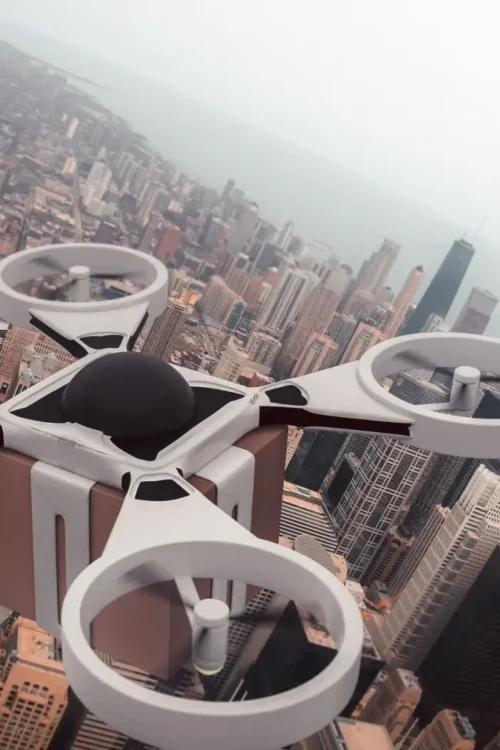Drones are equipped with cameras and sensors that allow for continuous surveillance over large areas, tracking the movement of people or vehicles in real-time. They are particularly effective in urban areas, border zones, or vast properties, where traditional surveillance might be challenging. With high-resolution video, thermal imaging, and night vision capabilities, drones offer unparalleled visibility and can quickly respond to incidents, capturing detailed footage for security teams.
Drones are crucial for assessing risks in unfamiliar or high-risk areas, especially during emergencies such as natural disasters, large-scale public events, or terrorist incidents. They can swiftly survey hazardous zones, evaluate potential threats, and relay data back to command centers for quick decision-making. This capability enhances situational awareness for responders, enabling safer, more efficient operations in high-risk environments.
Drones are invaluable during emergency search and rescue operations, especially in challenging or inaccessible areas. Equipped with thermal cameras or heat sensors, drones can locate missing persons or identify heat signatures, enabling quick responses in scenarios like natural disasters, forested terrains, or vast outdoor spaces.
By integrating advanced sensors—such as gas detectors, heat sensors, and air quality monitors—drones can detect hazards like gas leaks, chemical spills, or unauthorized environmental activities. This capability is critical for monitoring large areas for safety or regulatory compliance, identifying risks early, and responding effectively to prevent or mitigate damage.
Drones can be deployed to protect sensitive facilities, critical infrastructure, or public sites. They provide real-time surveillance and can quickly cover large perimeters, responding to potential threats or intrusions faster than ground-based security alone. This aerial capability enhances site security, whether for power plants, data centers, or government facilities
Drones can integrate seamlessly with other security systems, including CCTV, alarm systems, and anomaly detection algorithms. Through direct data transmission to central monitoring systems, drones provide additional layers of data and can coordinate with ground-based teams, closed-circuit cameras, and automated security alerts. This interconnected approach enables faster responses, comprehensive situational awareness, and coordinated action in complex security scenarios
By enhancing search and rescue, environmental monitoring, facility protection, and systems integration, drones significantly bolster the capabilities of modern security infrastructure, offering rapid and adaptable support in various security operations.

Drones offer several key advantages in security and operational contexts, making them a valuable asset for a variety of applications. Their versatility, reach, and efficiency provide distinct benefits over traditional methods
With their real-time data capabilities, safety advantages, and interoperability with other security technologies, drones significantly strengthen overall security and emergency response frameworks.
